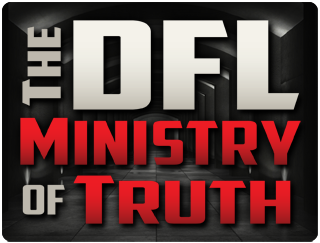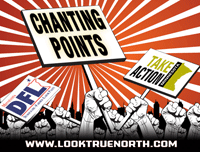I went into a chain diner the other day. I had a bowl of soup. I promptly felt ill, and before long came the projectile vomiting, and then the projectile diarrhea.
I went to the manager after I cleaned up to complain.
“Yeah” said the manager, “we’ve had a lot of that today with the soup. OK – actually every person who’s eaten the soup today has gotten sick. But in our defense, people eating the soup at all our other stores have gotten even sicker. You should feel pretty good, all in all!”
——–
MNSure – the state’s Obamacare exchange – has been a bulgarian goat rodeo from the very beginning. Between the cataclysmic botch of the rollout, to the Director’s corrupt canoodling with the state’s Medicad director, to the technical review that indicates this year’s open enrollment could be worse than last year, to Preferred One – the provider with the best value for most younger, healthier people – dropping out, it’s been an ordeal to watch a pretty typical example of government control of any product or service.
But now – in the wake of yesterday’s price hikes – MNSure, the DFL and the media (ptr) are trying a new tactic; the bizarre non-sequitur; I’m adding emphasis:
Even with the premium increases for 2015, the cost of a mid-level benchmark policy on MNsure for a 40-year-old will be about $182 per month, state officials said. That’s less than the rate for comparable plans in 16 other metropolitan areas, according to figures published in September by the Kaiser Family Foundation, which is based in California.
On Wednesday, the Commerce Department supplemented the foundation’s analysis with preliminary and current rates from more than two dozen other metropolitan areas, and concluded that rates in the Twin Cities are the lowest.
“When you compare Minneapolis and St. Paul to every metropolitan region throughout the country, Minnesota has the lowest rates in the nation,” Commerce Commissioner Mike Rothman said during a news conference near the State Capitol.
Ah. So Minnesotans’ rates are rising – rising by a lot for the people on the lower end of the market – but they’re higher elsewhere?
Ahem:
SO WHAT?
Minnesota had a system that covered 92% of Minnesotans – the highest rate in the country – with everything from cadillac government union plans to UCare to company health plans to inexpensive “catastrophic care” plans (now illegal!).
And it did all that for even less!
If your rates are rising 20% – and if you were a Preferred One customer, 2/3 of MNSure’s customer base, they are – on top of the higher rates you’re already paying (because MNSure replaced the catastrophic-care-only plan you may have had two years ago with a plan that includes mental health, preventive and, for the guys, OB-GYN services), why do you care what people are paying in Newark?
Are their plans rising 20%? If yes, then that proves the point. If no, then what is Minnsota doing wrong?




